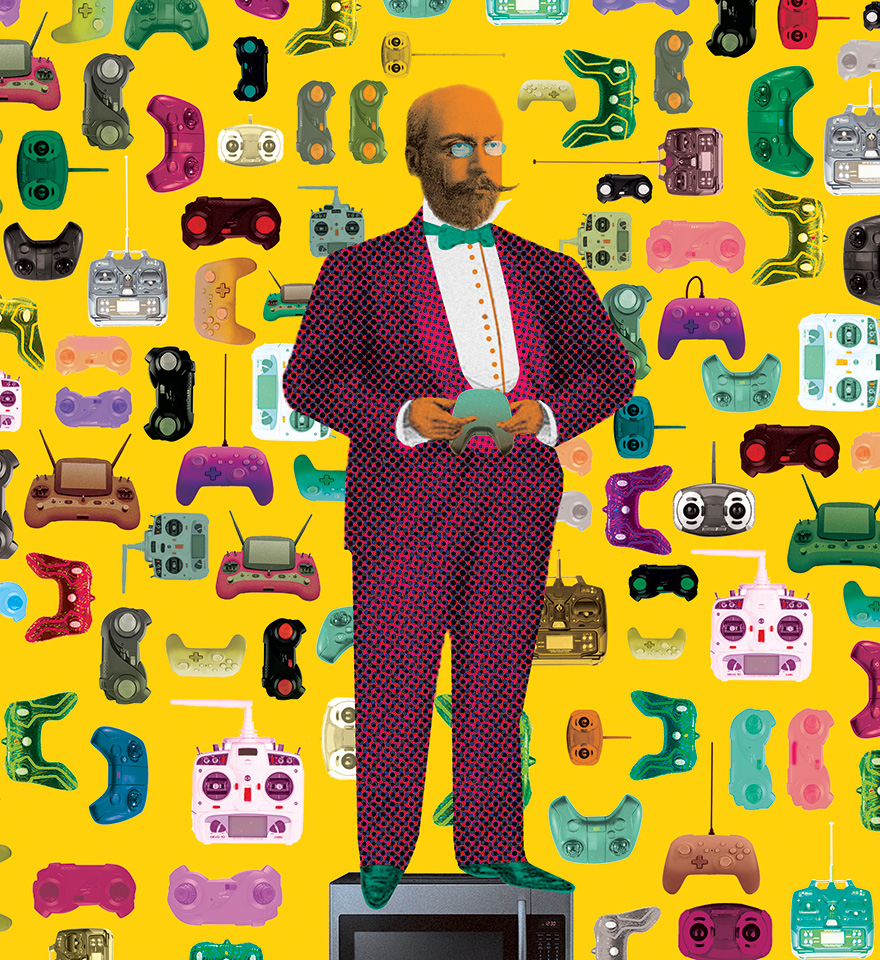PylchykovMykola
May 21, 1857, Poltava, Russian Empire (now Ukraine) —
May 19, 1908, Kharkiv, Russian Empire (now Ukraine)
Radio control
Google says that the first person to have a “toy on the remote control” was Nikola Tesla, who designed it himself. On July 1, 1898, he applied to the U. S. Patent Office to patent a small radio-controlled boat.

Visitors of the New York Electrotechnical Exhibition crowded around the pool to see invisible electromagnetic waves causing the boat to float forward, turn, or stop.
For many, it was magic, and Tesla himself called the technology a “borrowed mind”. Today we know another technology called “artificial intelligence”.
It is interesting that a few months before the Electrotechnical Exhibition, the citizens of Odesa witnessed the same “magic”. During a public lecture on March 25, Mykola Pylchykov turned on the lights of a lighthouse model that was in the next room with the help of a self-constructed radio remote control, and the waves passed through the wall, overcoming an obstacle. The engineer remotely blew up and flooded a model of a boat in a pool installed in the hall, forced a small cannon to fire, and moved the wing of the semaphore model ( at that time it was used to regulate the movement of trains).
Once again, two inventors from two different continents who had never meet each other made the same discovery almost simultaneously. But still, there was at least one difference between them...
The models controlled by Pylchykov had a special security element, a protector, thanks to which the signal was received only from his control panel. You may ask why he needed these security measures, because only Tesla had a second remote control, and the distance between Odesa and New York was
However, electromagnetic waves occur not only with the active participation of engineers. Lightning or neutron stars can also be the source of electromagnetic waves. The waves create interference as they spread, and the desired signal simply cannot reach the model. First of all, the Ukrainian engineer tried to avoid these obstacles.
Today, all radio models have such security elements, because there are a lot more obstacles.

Wi-Fi channels in the 2.4 GHz band
Taking, for example, electromagnetic waves having a frequency of 2.4 GHz or in the range from
But there are not so many free frequencies, so over time, walkie-talkies began to work on the same frequency, because radio waves and microwaves are of the same type. With their help, we can both heat a bowl of soup and establish a connection. Both Wi-Fi routers and radio-controlled toys now operate on this frequency.
In Ukraine, Wi-Fi works at frequencies between 2.412 and 2.472 MHz. These frequencies are divided into 13 channels, each about 20 MHz wide. Channels are usually named after the frequency that falls in the very middle of it. Although all 13 channels available in Ukraine have their center frequency, only three do not intersect 2.412, 2.437, and 2.462 MHz.
And so that microwave ovens do not suddenly establish control over the router or the machine on radio control, each device or remote control transmits a signal not just at a frequency of 2.4 GHz, but at a smaller frequency band called the channel so the microwaves do not suddenly establish control over the router or device on radio control. For example, 2.412, 2.437, 2.462 MHz. These devices also have a built-in security element that prevents mixing with those signals that go through other channels or have a different frequency.
It seems that Pylchykov knew something about our love for gadgets...